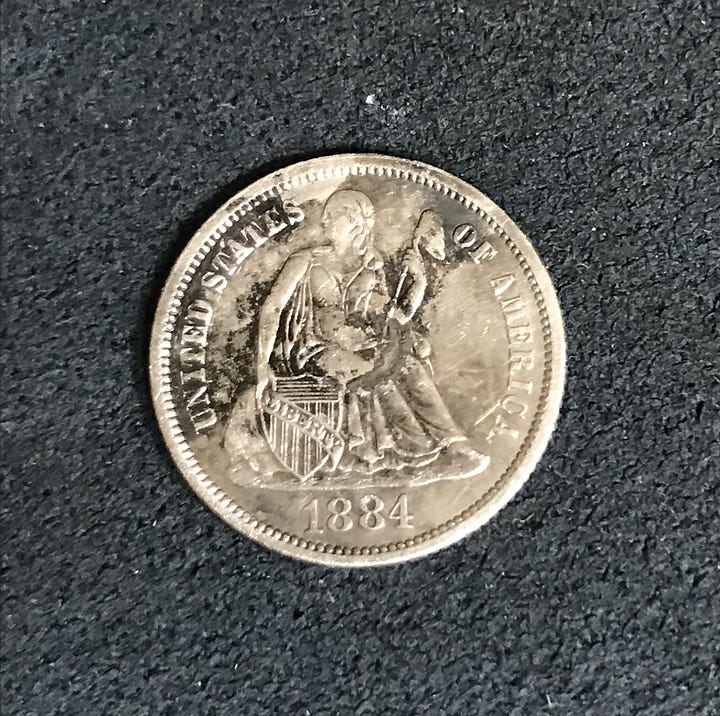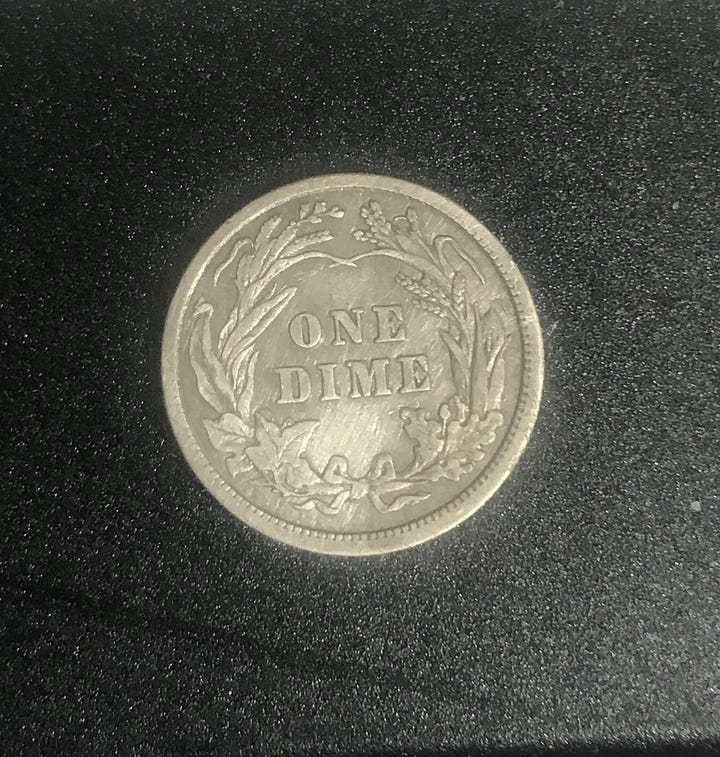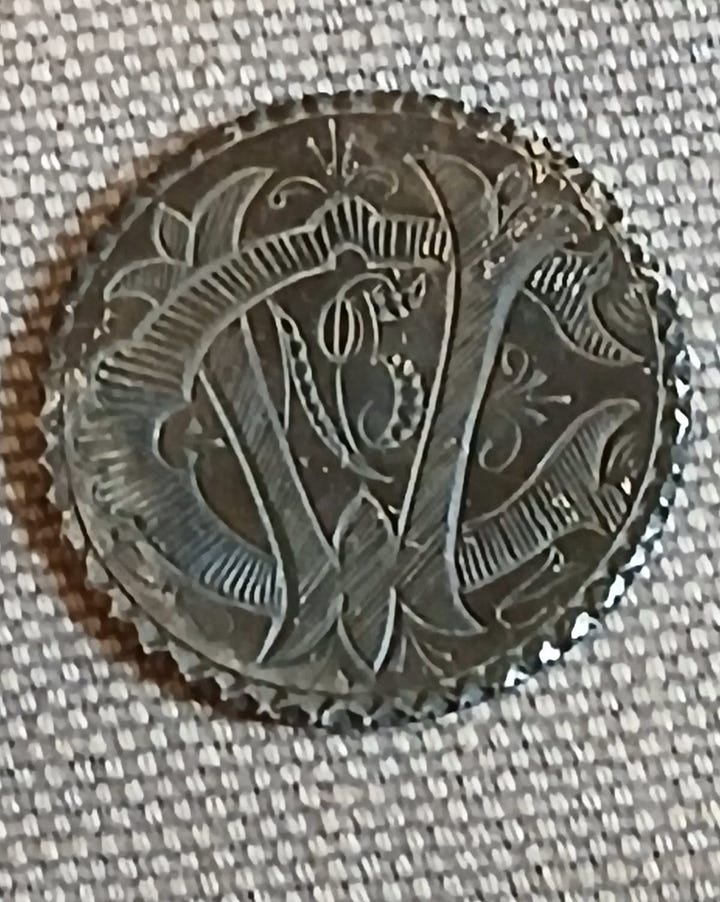Today’s post is about a really cool piece that I recently found. Some of you know what it is because I put it on my annual Facebook post. During the summer months I do a lot of creek detecting. It’s usually too hot and too buggy for detecting in the woods; even if I don’t find anything, being in the water helps keep me cool. With this year’s abnormally wet summer, I couldn’t get into the creeks as early as I would have liked. The water level was too high and I didn’t want to get washed out to sea. When the conditions finally improved, I thought I would go back to an area where I’ve had success in the past.
I hadn’t been swinging the detector very long when I pulled out a 1934 Mercury dime. It was highly tarnished from being in the water so long, so it took a few seconds for me to realize what it was. I figured, even if I didn’t find anything else that day, that I would be happy with that.
After searching that area for awhile with no more finds, I decided to try upstream about 100 yards. I was detecting along the edge of the creek when I got a decent hit on the machine. I was using my White’s MXT AllPro detector (for more information about this detector and other equipment that I use, check out my post here), and one of the features it includes is tone ID. I can tell from the tone it emits what the target is likely going to be. Low tones are usually junk such as pull tabs or shotgun shells, while high tones indicate coins and jewelry. I looked at the LCD (liquid crystal display) and noticed that it was indicating a target about two inches deep. I thought at best it probably was just a modern coin. I stuck my hand-held pinpointer in the mud, got a positive hit, reached in with my free hand, keeping the top of the detector out of the water (because it’s not waterproof), and pulled the target out of the slime. After a little cleaning, I looked closer and couldn’t believe what I had uncovered! It was an 1884 seated Liberty dime! Although they were minted from 1837 until 1891, they are very hard to find, at least for me. In thirteen years of detecting, it’s only the fourth one I’ve been able to find. To make it even better, when I turned it over to check the reverse for a mint mark, what I saw instead was a very intricate engraving.




I knew right away I had found something very special — a love token! Love tokens are coins that have been ground down on one side (almost always the reverse), and a very intricate personal message or design has been etched onto the smooth surface. They are often made as a keepsake or memento, thus the name “love token”. They were popular in the 18th and 19th centuries, especially during the Victorian era, and were often given as tokens of affection, remembrance, or good luck. Most were made from dimes, but any denomination coin could be utilized. When I meet someone while I’m detecting, and they ask me what my number one find is, I tell them that I have so many nice finds that I couldn’t possibly narrow it down to just one. But this definitely makes it into the top five!
As with a lot of my finds, it would be interesting to know more about this love token. For example, what was the occasion that it was made to commemorate? Who was it made by? Who was it made for? It’s an 1884: is there any significance to that date, or was it just the coin the creator had at hand? Is that a No. 5 (number five) in the center of the token, and what’s the significance of that? How did it end up in the creek where I found it? So many questions, so few answers.
Have you ever seen a love token similar to this one? How is yours different? Was yours found in water? Comment below and let me know!





What a LOVEly post for my birthday! 🙃